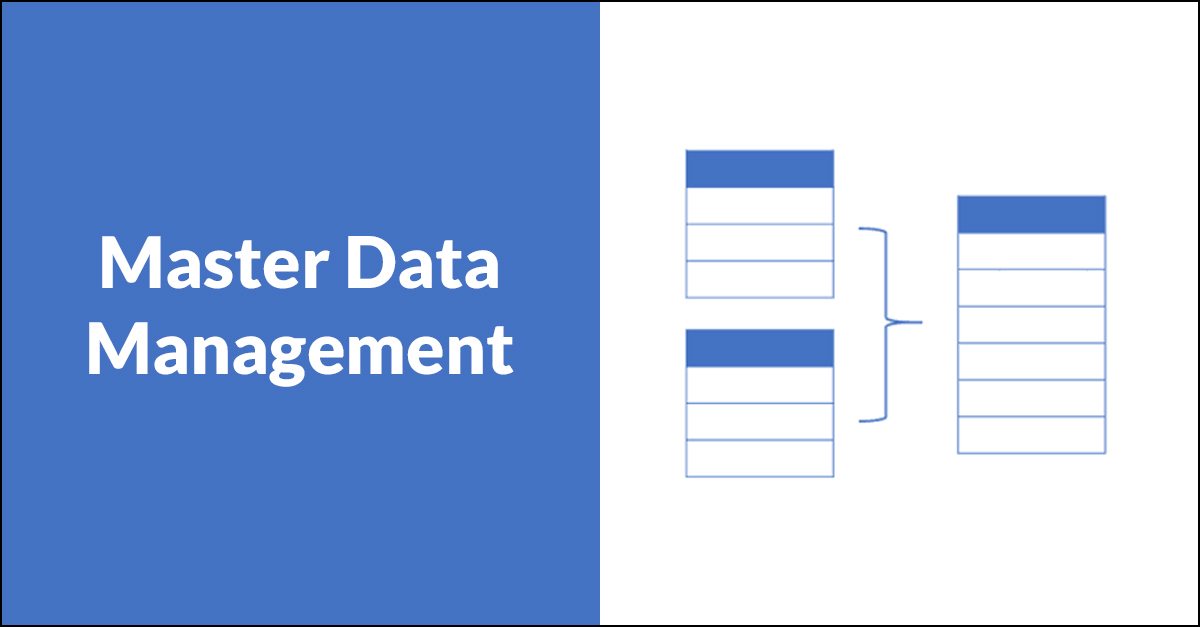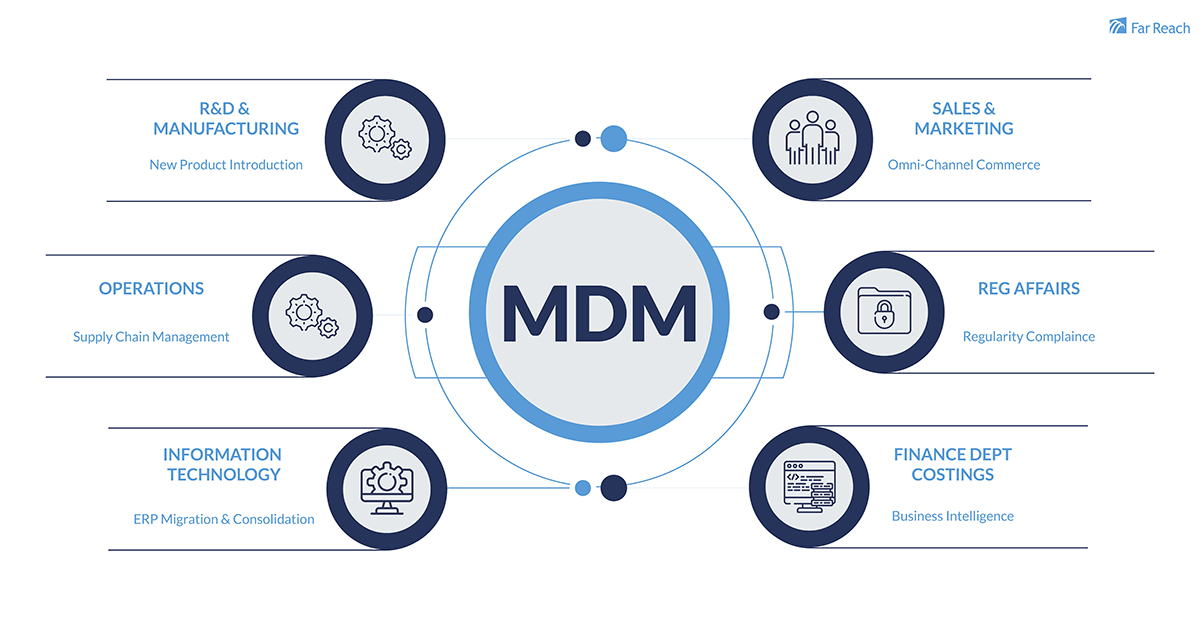
Master data management (MDM) was born out of the need for businesses to improve the quality of their data, as well as that of the insights they can derive from that data.
We can no longer say that we don’t have enough data to make informed decisions. Quite the opposite, in fact. Most companies are drowning in data that they can’t properly leverage. Using this large volume of data, if it isn’t managed, cleaned, and interpreted properly, can actually hurt your business more than “going with your gut.”
So what can you do? It’s 2020, so we know there’s a better solution than choosing between half-assed data and “the gut feeling.”
Enter master data management.
What Is Master Data Management?
Master data management is the process that manages, organizes, centralizes, localizes, synchronizes, and categorizes all your data, across departments and according to certain predefined rules.
Master data management is an early output of many companies’ data governance efforts. While data governance is the higher-level, strategic approaches a company wraps around its data, MDM is one of the tactics for reaching data governance goals.
Imagine a huge pile of books from every possible genre. A librarian would sort through that pile and take the time to categorize each book and then arrange them alphabetically, by genre, or using the beloved Dewey Decimal System.
This is what MDM does for the data in your business: It organizes and categorizes it so you know where the information you need is and so you can trust that the information is being stored and managed in a way that makes it most useful for decision-making.
With proper MDM, your data becomes more and more valuable—you can easily access it, use it, and leverage it for better campaigns, customer service, or improved business processes.
Does all this sound too dull to care about? The process of organizing and structuring data may not be glamorous, but the results can be truly spectacular.
How Software Integrations Help with Data Management
See how you can use custom integrations to help your different software systems share data and stay in sync.
Why Do You Need Master Data Management?
The average company uses an average of 34 SaaS solutions. Some of these are mission-critical.
Our entire business is built around the fact that systems and technology—ERPs, CRMs, process automation, and custom software—help businesses do what they do better.
Each system gathers, stores, and displays data in a different way. That’s not inherently a bad thing. For instance, the accounting department looks at clients differently than the sales or marketing department does, and they need different tools
and analytics. However, when these tools don’t talk, and are in their own data silos, your data is fragmented.
Let’s say your sales reps rely on Salesforce to manage contacts, leads, and new business. One of your biggest clients changes their address, and the account manager diligently updates the address in Salesforce.
So far, it looks like a smooth process. However, with the way most organizations are set up, the accounting department will still have the old address on record. Of course, you can always alert other departments via email and have them make the change
in their respective systems. But that process is clunky and very prone to human errors and inconsistencies—not to mention being time-consuming.
Now let’s look at it from the customer’s perspective: Someone could buy different products from different departments in your business. Think about a customer with multiple types of insurance policies (life insurance, home insurance, health
insurance, and so on) or about someone who leases a car from a local dealership and relies on the same dealership’s service department for maintenance and repair work.
If your data is not properly managed, these customers would feel like they are working with more than one company. They’d get an endless series of irrelevant promotional emails, direct mail pieces, and customer care calls. Like have you ever gotten
a service notice for the car you just traded in...from the dealer you traded it to?
It’s a hassle for everyone.
Master data management creates a data lake or a data warehouse to make sure all your data, regardless of how many software systems you use, is consistent across the board. By creating one source of truth, often called the golden record, every system can
use the most updated data at all times, without relying on human data entry or complex manual processes.

Top Benefits of Master Data Management
What can master data management really do for you?
Overall, your data management efforts enable seamless integration between your departments
and offer your customers exactly what they want: a unified, smooth experience with your business.
1. Cross-sell Services
When your data is no longer siloed, you have a bird’s eye view over every customer or account. You can then easily send them only relevant offers instead of annoying them with countless promotions and emails for products they will never buy.
2. Better Customer Service
The moment one of your customers calls or emails your support department, the rep will know all there is to know about that person’s history with the company, without having to browse multiple systems or ask a colleague in a different department.
Your customers are happier and your team is more efficient and effective (and likely happier as well).
3. Seamless Business Processes
Forget all about inputting data manually or migrating it from one system to another. With master data management, the goal is to get to the point where all your data is updated in the data warehouse automatically.
Let’s follow up on the address change example above. According to the rules you create, when a customer changes their address and the sales rep updates it in Salesforce, it can automatically be updated in the data warehouse, which then updates it
in the accounting and other systems as well.
The beauty of master data management is that it’s 100% customizable and adaptable to your business processes and your needs. And as with everything we do, it can be implemented iteratively with the highest-priority items being tackled first.
4. Get to Know Your Organization Better
It can be surprising to learn how many gems lie hidden in unused and/or improperly analyzed data. With the right master data management processes, you can answer your most pressing questions and make more effective and timely decisions.
Which department has the most efficient processes?
How much time are your team members spending on repeatable manual tasks instead of focusing on growing the business?
Which leads are ready to buy and which are simply annoyed by your campaigns?
Data can answer any question you have as long as you know how to leverage it.
Wrapping Things Up
Can you imagine what would happen to your business if none of your departments communicated with each other? The amount of data and information loss would be sky-high!
The same happens when your software systems don’t “speak” to each other and they don’t share data. You stand to lose a lot and cripple your growth potential.
If you want to stop the waste and start leveraging your data, we can help! Reach out to us to learn more about master data
management for your business.